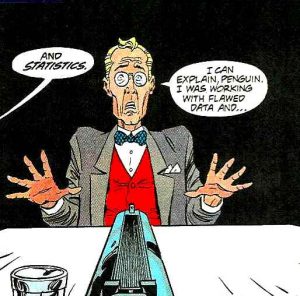
By Bill Rusteberg
As members of the +400,000 member TRS ActiveCare risk pool “The Power of Large Numbers” and “Economies of Scale” bring comfort to small Texas school districts . “We could not get comparable coverage on our own, much less at affordable rates” is the mind thought of school district officials throughout the state.
The pooling of risk is fundamental to the concept of insurance. Economies of scale and the power of large numbers narrows the focus towards predictability of future costs. In general, the larger the risk pool, the more predictable and stable the premiums can be.
Although larger risk pools are typically more stable, a large risk pool like TRS ActiveCare does not necessarily mean lower premiums and better benefits.
 One factor is the average health care costs of the members of the pool. A large pool of unhealthy members can result in higher than average premiums versus a smaller pool with a higher percentage of healthy members enrolled. Thus pool risk factors are not limited to economies of scale or the rule of large numbers alone. A major factor is “The Beast”, known as adverse selection.
One factor is the average health care costs of the members of the pool. A large pool of unhealthy members can result in higher than average premiums versus a smaller pool with a higher percentage of healthy members enrolled. Thus pool risk factors are not limited to economies of scale or the rule of large numbers alone. A major factor is “The Beast”, known as adverse selection.
Adverse selection occurs when members have the choice of whether to purchase insurance coverage or not. Younger members, the 20’s something invincible crowd, may not view health insurance as a day-to-day necessity and opt out of coverage to spend their money on other things. Older, sicker members will likely join the insurance program. As these choices are made over time, adverse selection results in higher rates for all and as that happens more and more of the healthier members drop out of the plan. Thus begins a death spiral eventually leading to an erosion of coverage and higher costs through cost shifting to plan members.
Another factor is the level of reimbursement paid by the pool to medical caregivers.
These two factors are having a significant impact on the TRS ActiveCare risk pool. Adverse selection and systematic higher provider unit costs has resulted in significant benefit erosion, less choice, and higher premium costs.
On the other hand, several small Texas school districts in deep South Texas have established their own risk pool with good success. Unlike TRS ActiveCare, they have achieved static rates without cost shifting of any kind while improving benefits at the same time.
How have they done this?
They killed the “Beast” (adverse selection). They pay providers less than TRS ActiveCare. They enjoy the benefits of economies of scale and the power of large numbers through risk sharing with hundreds of thousands of other insureds across the county in the form of stop loss insurance, a pooled product.
Unfortunately the myth of the “Power of Large Numbers” paralyzes the thought processes of many into inaction. “If our pool’s rates are this high, and our benefits are this bad, it has to be worse on the outside!” With that kind of mindset the only solution to the problem is to throw more money at it. That is, if you have it.

